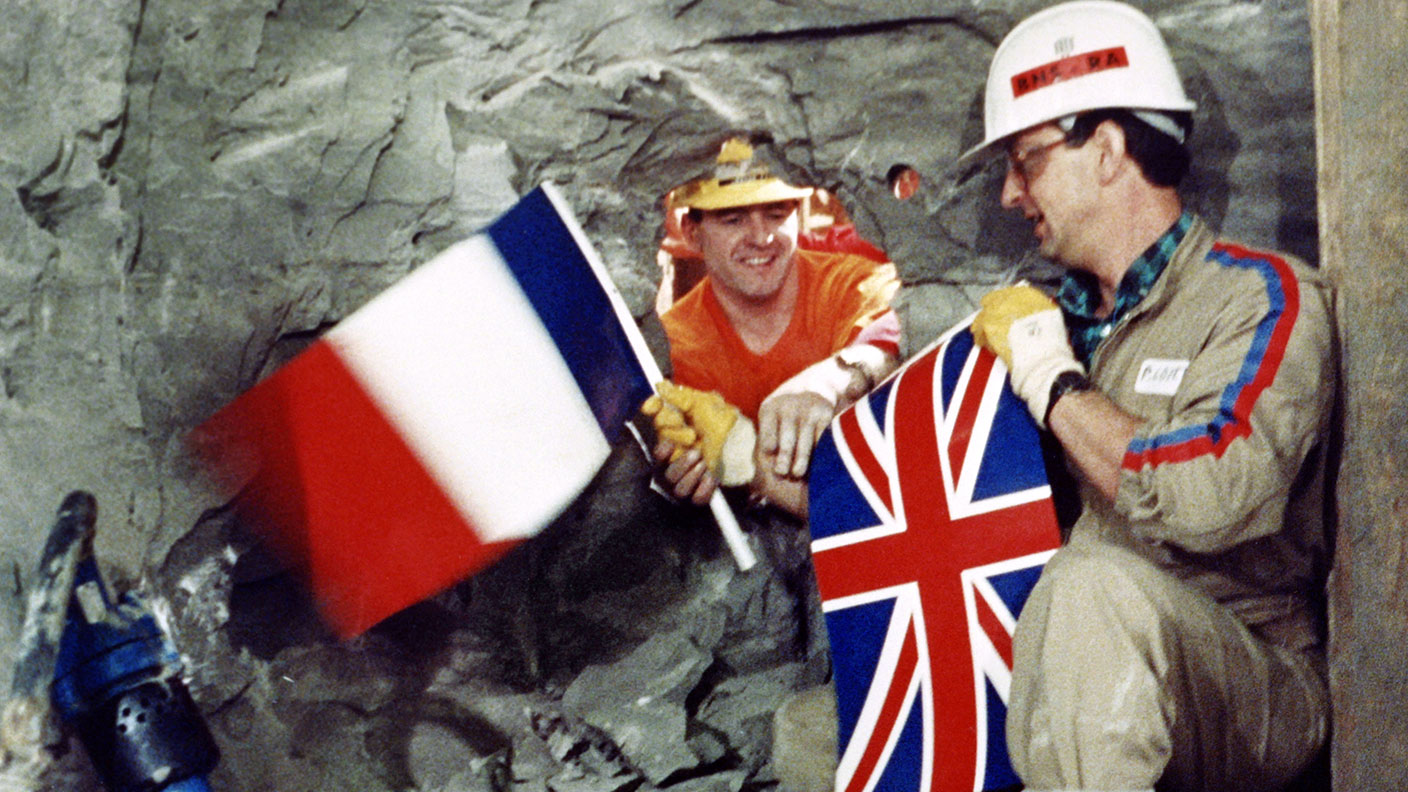
The idea of joining England and France by means of a tunnel is by no means a new one. A couple of engineers proposed a tunnel to Napoleon; in 1802, Albert Mathieu wanted to build a tunnel for horse-drawn carriages, with an island halfway for ventilation and changing horses; and in 1856, Aimé Thomé de Gamond suggested it again. But none of these schemes came to anything.
The first serious attempt at construction came in 1881. A 1,893-metre pilot tunnel was dug from Shakespeare Cliff, and a 1,669-metre tunnel from Sangatte. That endeavour was abandoned in May 1882 after the British government got cold feet, worried about the French using it for nefarious invasion purposes.
After Britain joined the Common Market, the British and French governments decided to have another go. And so in 1974, work started on both sides of the Channel on a publicly-funded project. But, short of funds, the British government cancelled it in 1975, after about 1,400m of tunnel had been dug.
MoneyWeek
Subscribe to MoneyWeek today and get your first six magazine issues absolutely FREE

Sign up to Money Morning
Don't miss the latest investment and personal finances news, market analysis, plus money-saving tips with our free twice-daily newsletter
Don't miss the latest investment and personal finances news, market analysis, plus money-saving tips with our free twice-daily newsletter
In the 1980s, the Conservative government declared it had no objection to a privately funded tunnel being built. And so in 1988, work began for a third time. This time, it would be a two-bore rail tunnel, with a smaller service tunnel between them.
Two years later, on 1 December, Graham Fagg and Philippe Cozette broke through the service tunnel and shook hands 40m below the sea bed, 14 miles from the English coast and tenfrom the French. The breakthrough had been made.
Work continued on the main tunnels for another six months. 13,000 engineers worked with 11 tunnel boring machines, digging 76m a day. The north tunnel broke through in May 1991, and the south tunnel in June.
The completed tunnel is 31.4 miles long, with 23.5 miles of that under water. It cost £4.65bn – 80% more than originally estimated. It was officially opened by the late Queen and President Mitterrand of France in May 1994.
Get the latest financial news, insights and expert analysis from our award-winning MoneyWeek team, to help you understand what really matters when it comes to your finances.
Ben studied modern languages at London University's Queen Mary College. After dabbling unhappily in local government finance for a while, he went to work for The Scotsman newspaper in Edinburgh. The launch of the paper's website, scotsman.com, in the early years of the dotcom craze, saw Ben move online to manage the Business and Motors channels before becoming deputy editor with responsibility for all aspects of online production for The Scotsman, Scotland on Sunday and the Edinburgh Evening News websites, along with the papers' Edinburgh Festivals website.
Ben joined MoneyWeek as website editor in 2008, just as the Great Financial Crisis was brewing. He has written extensively for the website and magazine, with a particular emphasis on alternative finance and fintech, including blockchain and bitcoin.
As an early adopter of bitcoin, Ben bought when the price was under $200, but went on to spend it all on foolish fripperies.
-
 PayPoint: A promising stock for income-seekers
PayPoint: A promising stock for income-seekersPayPoint, a household name across Britain, is moving away from its traditional roots toward a digital future. Investors after a steady income should buy in
-
 Invest in forestry: a tax-efficient way to grow your wealth
Invest in forestry: a tax-efficient way to grow your wealthRecord sums are pouring into forestry funds. It makes sense to join the rush, says David Prosser
-
 31 August 1957: the Federation of Malaya declares independence from the UK
31 August 1957: the Federation of Malaya declares independence from the UKFeatures On this day in 1957, after ten years of preparation, the Federation of Malaya became an independent nation.
-
 13 April 1960: the first satellite navigation system is launched
13 April 1960: the first satellite navigation system is launchedFeatures On this day in 1960, Nasa sent the Transit 1B satellite into orbit to provide positioning for the US Navy’s fleet of Polaris ballistic missile submarines.
-
 9 April 1838: National Gallery opens in Trafalgar Square
9 April 1838: National Gallery opens in Trafalgar SquareFeatures On this day in 1838, William Wilkins’ new National Gallery building in Trafalgar Square opened to the public.
-
3 March 1962: British Antarctic Territory is created
Features On this day in 1962, Britain formed the British Antarctic Territory administered from the Falkland Islands.
-
10 March 2000: the dotcom bubble peaks
Features Tech mania fanned by the dawning of the internet age inflated the dotcom bubble to maximum extent, on this day in 2000.
-
9 March 1776: Adam Smith publishes 'The Wealth of Nations'
Features On this day in 1776, Adam Smith, the “father of modern economics”, published his hugely influential book The Wealth of Nations.
-
 8 March 1817: the New York Stock Exchange is formed
8 March 1817: the New York Stock Exchange is formedFeatures On this day in 1817, a group of brokers moved out of a New York coffee house to form what would become the biggest stock exchange in the world.
-
7 March 1969: Queen Elizabeth II officially opens the Victoria Line
Features On this day in 1969, Queen Elizabeth II took only her second trip on the tube to officially open the underground’s newest line – the Victoria Line.

